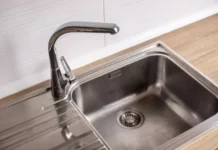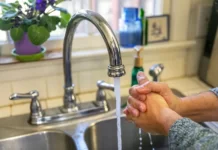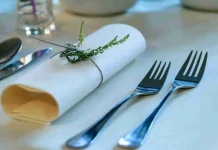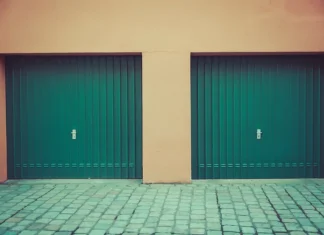Glass top stove and cast iron kitchen gadgets do not sound good as these two things should not be going anywhere close to each other in the kitchen ever. Though you would be mistaken, the truth is that new cast iron crockery is truly well suited to cooking on a shiny and sleek glass top stove but with necessary precautions.
Glass surface stoves are an amazing kitchen appliance-it looks expensive and classy. Sometimes it might be difficult to deal with when you use any cast iron skillet.
For cooking purposes, a cast-iron skillet is a perfect choice, however, it is clunky, heavy, and edgy that can affect the glass surface of the stove if you are careless. While cooking in an iron skillet, one has to be extra careful or use any nonstick cookware.
In this article, we will discuss how to protect glass top stoves from cast iron. Let’s start.
Glass top stoves and cast iron? Sounds risky and unsafe
We all know that even saying the words cast iron and glass top stove in one sentence sounds a bit weird and approaches the point of being risky. The main point of these two famous cooking appliances is that they should never be common.
A glass cooktop looks incredibly delicate whereas, a cast iron skillet can be very heavy. Usually, iron is seen as somewhat rustic, cookware from the past, instead of modern equipment. At the other end of the spectrum, glass cooking stoves are a modern kitchen appliance as you should have inaugurated.
So, can you use cast iron on glass top stoves?
Chefs and experts recommend using iron appliances on glass stoves. They used Dutch ovens and Uno Casa skillets many times with some incredible results.
Yes, we’ll say that cast iron can be used on a glass stovetop. There are some dangers but you can use cast iron pans on glass top stoves.
How to use cast iron on glass tops (to prevent ugly scratches)
Cast iron on glass top? It is like a disaster to happen.
The smooth surface of the glass stove is much delicate in appearance as compared to the traditional stove with the coil.
In both stoves, electric elements are used for cooking, but in the glass stovetop, the heating element is below the glass-ceramic rather than top.

What’s the appeal of the glass stovetop?
The most appealing thing about a glass stove top is that it has a smooth surface that makes cleaning easy. There are no spaces present between the coils on the flat surface where food can spill.
In comparison to the glass top stove, another positive point of the glass stove top is that it has a smooth and leveled surface, making sure that heat is distributed evenly via induction.
What pans should not be used on a glass stove top?
Rougher and older cast iron pans and pots can be riskier to use on a glass stove. New types of cast iron cookware have a smooth bottom which helps in the prevention of scraping or scratching the glass layer.
Lighter and smaller iron pans and pots are also less likely to damage and scratch your stove as the weight is less.
As an alternative, to avoid scratching, you can select a different material. The best option is stainless for this. It has enough weight to avoid sliding around and remain stable however, it is smooth to control scratching the glass.
How to protect glass top stove from cast iron pans?
Cast iron crockery is heavy and can be rough on your counters and stove. Following the steps mentioned below, you can use cast iron safely on cooktops and electric stoves.
You won’t have to change or replace a glass stovetop every month when following it carefully.
1. Lift your pans
It seems appealing to slide your cast iron cookware across the glass top after you are done with cooking. Cast iron, after all, is heavy and can be difficult to lift. But it goes a long way to lift your pans and pots in order to protect the glass stove.
As cast iron is heavy and rough, so sliding it on the surface of a glass can cause a small crack that ultimately leads to shattering off the cooktop.
Gently lift the pans and pot on the stove instead of dropping a pot on the glass or sliding them to prevent damage.
2. Season your entire pan
This is the way to go if you want to prevent scratches on the glass cooktop. Mostly, people season the inner side of their favorite pan, leaving the outer surface bumpy and rough.
The rough and bumpy surface can damage your glass cooktop, eventually breaking it out of the blue.
The chances of scratching your glass top surface are greatly minimized because of the smooth and even cast-iron bottom which also helps to provide the best possible protection when cast iron is used on a glass top stove.
3. Use Heat Diffusers
Purchasing a heat diffuser is among the simplest ways to enhance the life of your glass stove top. For an electric glass-top stove, a heat diffuser will help to diffuse the heat and dispense it across the bottom surface of a skillet.
The range top heat diffuser will also shield the delicate surface from rough and heavy pans and pots.
The diffuser acts as a buffer between the glass stove top and the things you put on it. The diffuser is made from portable, yet everlasting metal. This might be the easiest and cheapest way to protect your cooktop from scratching and cracking.
4. Get a Glass Cooktop Protector
This is another simple way to stave off damage to the surface of your stove. A protector for ceramic/glass stove top is a thin shield that protects the cooktop. They are made from silicone or rubber and are heat resistant and anti-slip.
A heat-proof glass stove cover will also shield your tops from scratches, spills, and grime. They are foldable and easy to clean.
The protector acts as a buffer between your cast-iron skillet and glass cooking surface. A ceramic stove top cover can be used if you are unable to find one designed for glass cooktops.
5. Keep Everything Clean
Keeping grease and grime may be the easiest and simplest way to provide protection against glass top stoves for later use. Clean your stovetop and cast iron cookware on a regular basis.
Clean your cast iron crockery with dish soap, warm water, and a sturdy sponge. Discard any bits of food stuck to the bottom of the skillet and any grease. Clean the spots skillfully will prevent scratches and burn marks from emerging on your glass stovetop.
You must also clean the surface of the stove after cooking regularly to get rid of spilled food, grease, and grime. A good and deep cleaning once a week will protect the glass cooktop.
The aim is to prevent staining and building grime on your new and shiny stove.
Strategies to clean glass stovetops
If you want to know the simplest and easiest way to clean your glass stove top with the things already present in your kitchen store.
What you need:
- A soft cloth or rag
- Baking soda
- A spray bottle of white vinegar solution
Instructions:
- Spray the utensils with the vinegar solution
- With the help of a cloth, wipe away the liquid
- Use a dry cloth to buff any streaks
- Spray the solution onto the surface and sprinkle some baking soda on the surface for deep cleaning
- Take some hot water, dip a towel and squeeze out the excess. Place the towel on the cooktop and let it rest for 10-15 minutes.
- With the help of a cloth, wipe away the baking soda and vinegar mixture. Spray vinegar again if needed and clean out any streaks with the help of a cloth.
Points to consider while cleaning
- Clean the top when it is cool
- Avoid using an excessive amount of cleaning product
- Instead of steel wool or a scouring pad use gentle tools like soft cloths.
- When cleaning your stove, follow the instructions mentioned by the manufacturer.
The Bottom Line
We hope you’ve got the answer of your question that how to protect glass top stove from cast iron. It is not challenging to use cast iron cookware on glass stovetops. Make sure to follow the proper guidelines. Still, we recommend using friendly crockery. By following some essential precautions, you can still use your already present cast iron on glass stoves. Always remember that stainless steel cookware is a great and perfect choice rather than cast iron.












